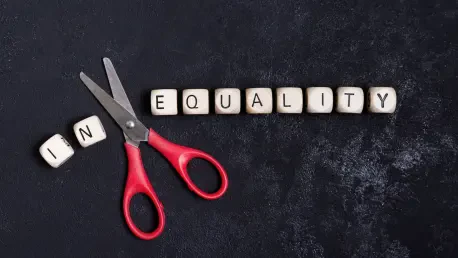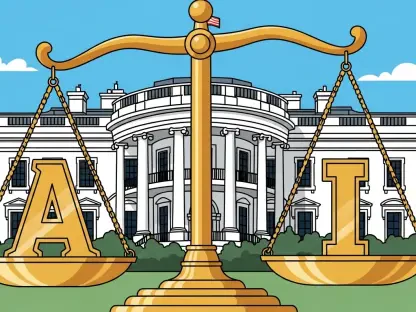In the realm of social policy and inequality, Desiree Sainthrope shines with her deep knowledge and expertise in legal frameworks and global compliance. She’s here to elaborate on the sometimes overlooked intricacies of financial inequality, particularly in the context of children in the UK, and the potential of the Equality Act of 2010 to evolve further.
Can you explain what the UK Equality Act of 2010 is and its purpose?
The UK Equality Act of 2010 is a fundamental piece of legislation aimed at consolidating various anti-discrimination laws into a single act. Its primary purpose is to protect individuals from unfair treatment and promote equal opportunities across various walks of life. This was done by identifying nine protected characteristics, which help ensure that personal attributes such as age, race, or sexual orientation do not lead to discrimination.
What are the nine protected characteristics in the UK Equality Act?
The act thoughtfully safeguards individuals from discrimination based on nine specific characteristics, which include age, disability, gender reassignment, marriage and civil partnership, pregnancy and maternity, race, religion or belief, sex, and sexual orientation. These characteristics cover a broad range of identities and situations, ensuring that people are shielded from prejudice in both private and public life.
Why do you think financial status was not included as a protected characteristic in the UK Equality Act?
Financial status, unlike the other characteristics, is seen more as a situation rather than an intrinsic personal trait. Legislatively, it’s challenging to define financial status as a characteristic, partly because it can be dynamic and influenced by various external factors. As such, addressing socio-economic disparities directly through the Equality Act may fall outside the traditional scope of discrimination law, which is tailored to immutable or deeply personal traits.
How would you define the term “situation” in relation to financial inequality?
When we speak of a “situation” in financial terms, we refer to the fixed circumstances that limit an individual’s opportunities due to lack of resources. It signifies a socio-economic condition that people find themselves in, often from birth, which can restrict access to essential services, like education and nutrition. These situations can deeply impact personal development and future prospects, often independently of any choice by the individual.
Can you discuss the current child poverty situation in the UK and how it has changed over the years?
Child poverty in the UK is a growing concern, with numbers rising from 3.6 million in 2011 to 4.3 million in 2023. Despite global efforts post-2010 to reduce poverty, the UK has lagged behind. This means an increasing number of children live with limited access to resources necessary for healthy and productive lives. These statistics are a sobering reminder of the urgent need for deliberate action to protect and uplift impoverished children.
How does financial inequality impact children’s nutrition and overall health in the UK?
Financial inequality severely affects children’s nutrition, as those from poorer backgrounds often resort to cheap, unhealthy processed foods. This imbalance can lead to deficiencies in essential nutrients and negatively influence their physical growth and cognitive development. Moreover, a lack of resources can mean missing out on school meals, further exacerbating these health disparities and hampering their educational performance and future opportunities.
What are some of the educational challenges faced by children living in poverty in the UK?
Children in poverty face significant barriers to education. Due to a lack of resources, they often struggle with inadequate learning materials, poor access to enrichment activities, and limited support at home. These factors contribute to an achievement gap with their wealthier peers, who are three times more likely to reach above-expected levels of attainment at crucial stages in their education, limiting their future educational opportunities and career prospects.
How does financial inequality affect children’s ability to explore their interests and talents?
Financial constraints significantly limit children’s ability to pursue interests in areas like music, sports, or the arts—activities that require resources such as equipment or lessons. Without opportunities to engage in these areas, children miss out on discovering potential talents and passions, which can play a crucial role in their personal and professional identity development. This perpetuates a cycle where disadvantage begets further disadvantage.
Do you believe that expanding the protected characteristics to include financial status could provide more opportunities for disadvantaged children? Why or why not?
Expanding the protected characteristics to include financial status could theoretically open up more opportunities by acknowledging and safeguarding against economic disadvantage. It would create a legal foundation requiring equal access to vital resources irrespective of financial background. However, such a change would be complex to implement, possibly requiring significant shifts in policy and resource allocation to level the playing field effectively.
How might protecting financial status under the Equality Act change the societal perception and treatment of children in poverty?
Protecting financial status could shift societal attitudes towards children in poverty by highlighting economic disparity as a critical issue requiring legal intervention. By recognizing it formally in legislation, it becomes harder to ignore. This could foster a more empathetic and supportive environment, prompting both governmental and societal efforts to bridge the gap and create equitable opportunities for all children.
Can you provide examples of other regions or governments that have taken steps to address financial inequality among children?
Some Nordic countries, known for their progressive social policies, have been at the forefront of addressing child poverty through comprehensive welfare systems and educational access. By providing robust social safety nets and ensuring equal educational opportunities from an early stage, these countries mitigate the impact of financial inequality, serving as potential models for others to examine and perhaps emulate.
What obstacles do you foresee in advocating for financial inequality to be recognized under the Equality Act?
One of the major obstacles is the potential for resistance based on the perception that financial inequality does not fit within traditional human rights frameworks. Additionally, there would be significant political challenges, as recognizing financial inequality could implicate existing socio-economic policies, making it a contentious issue for incumbent governments wary of criticism or accountability for systemic failures.
How could the UK government potentially adapt legislation to address financial inequality without incriminating itself?
The government could consider introducing gradual legislative changes that focus on incremental accountability and resource provision without directly blaming past governance. By implementing future-oriented policies that acknowledge economic disparities and strive towards mitigation through enhanced social programs, there is room to make meaningful progress without framing existing conditions as past omissions or weaknesses.
How might such legislative changes impact future generations of children in poverty in the UK?
If implemented effectively, legislative changes aimed at mitigating financial inequality could substantially alter the life trajectories of future generations. By ensuring equal access to education, nutrition, and extracurricular activities, these policies could dismantle ingrained cycles of poverty and unlock previously untapped potential, leading to a more equitable society where every child has the chance to succeed.
Is there a successful model or strategy from other countries that the UK could adopt to address financial inequality among children?
Adopting elements from Scandinavian models, like universal early childhood education and comprehensive social services, could be beneficial. Emphasizing inclusivity and resource access from a young age can level the playing field more effectively. These models showcase how strategic policy design, interdependently tackling education, health, and welfare, can significantly alleviate the effects of financial inequality among children.









